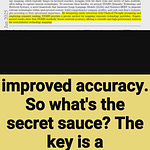Non-autoregressive MIM (Non-autoregressive Masked Image Modeling) matches SDXL quality with 3x faster generation and 8GB VRAM 🔥
Skip the diffusion dance: MIM's one-shot image magic ✨
Bridges the gap between MIM and diffusion models for high-quality text-to-image synthesis.
📚 https://arxiv.org/abs/2410.08261
Original Problem 🎯:
Text-to-image synthesis models like diffusion-based SDXL are computationally intensive and struggle with unified language-vision approaches. Non-autoregressive Masked Image Modeling (MIM) techniques offer potential efficiency but face resolution constraints and performance gaps.
-----
Solution in this Paper 🔬:
• Meissonic: A 1B parameter MIM-based text-to-image model
• Enhanced transformer architecture: 1:2 ratio of multi-modal to single-modal layers
• Rotary Position Embedding (RoPE) for high-resolution detail
• Masking rate as dynamic sampling condition (1000 discrete levels)
• Feature compression layers for efficient high-resolution generation
• Micro-conditioning: image resolution, crop coordinates, human preference score
• Progressive 4-stage training approach on curated datasets
-----
Key Insights from this Paper 💡:
• Efficient high-resolution (1024x1024) generation possible without external super-resolution
• Balanced use of multi-modal and single-modal transformer layers enhances performance
• Dynamic masking rate condition significantly improves image detail
• Progressive training stages crucial for building competent text-to-image models
-----
Results 📊:
• Highest scores on HPS v2.0 and MPS benchmarks across image categories
• GenEval: 0.54 overall (vs 0.55 SDXL)
• Efficient: 48 H100 GPU days training, runs on 8GB VRAM GPUs
• Strong performance in image quality, text alignment, and style diversity










